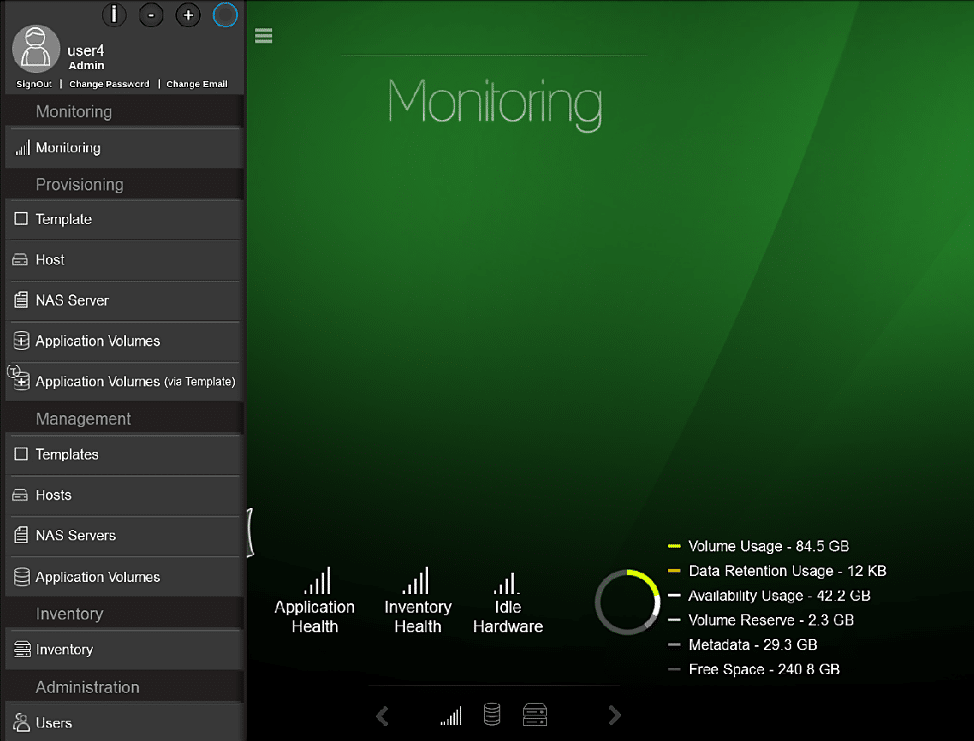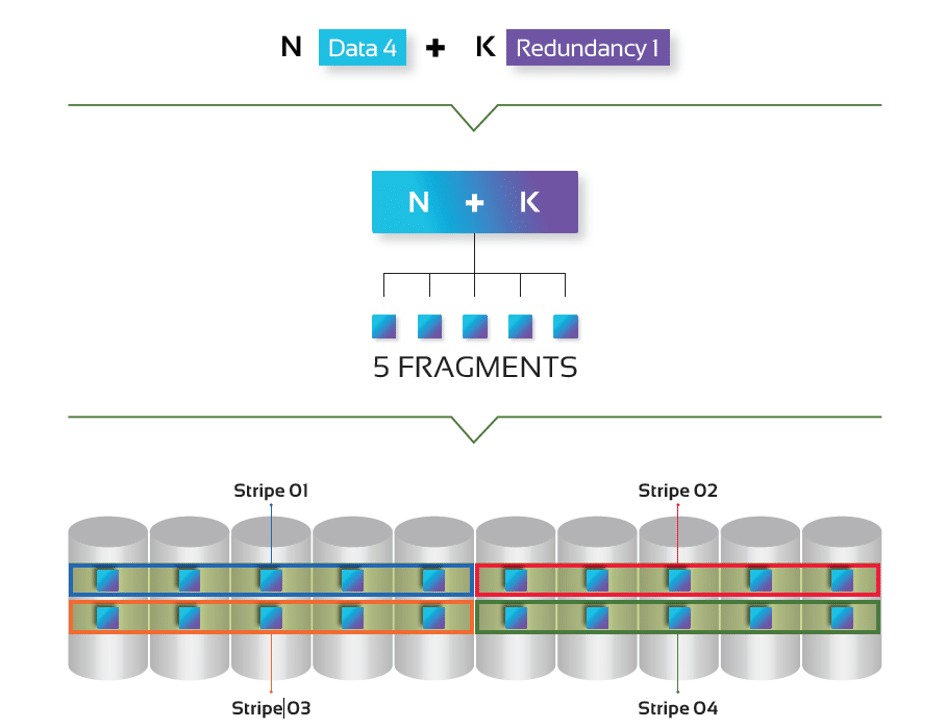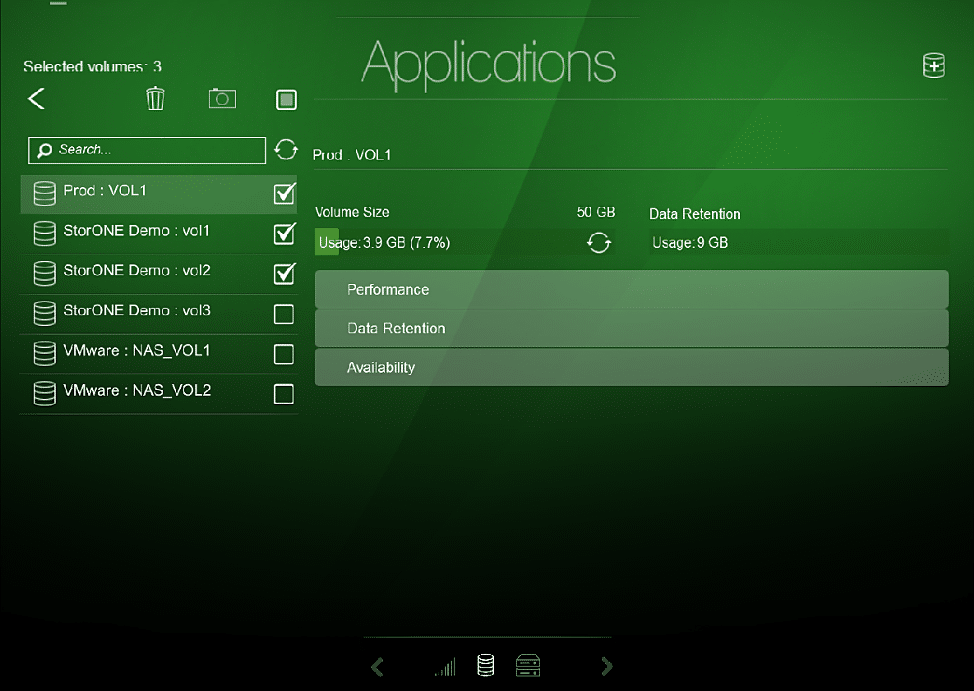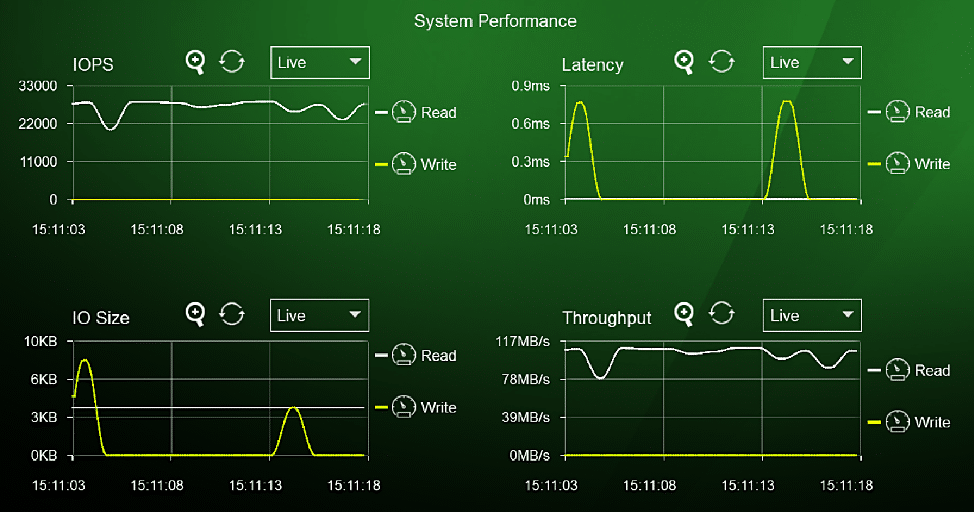Although StorONE is a relative newcomer to the storage market, since 2012, the company has developed The Enterprise Storage Platform, the technology behind their software-defined storage (SDS) product “S1.” An Enterprise Storage platform is evolving Software Defined Storage so that it provides maximum performance, supports all use cases (Block, File, Object )and all protocols (Fibre, iSCSI, NFS, SMB, S3), which all leads to dramatic reductions in cost and complexity.
StorONE has had over 50 patents granted to their company. StorONE is the creation of storage maven Gal Naor, whose name is quite familiar in the storage world. He is known for having introduced the first real-time enterprise storage compression technology in 2004 when he was at StorWize, which was later acquired by IBM in 2010. After leaving IBM, Gal set off to work on developing the next generation of storage products. Gal envisioned this next generation as being storage-protocol and platform agnostic, capable of taking advantage of the latest hardware, and being free from the constraints of last-gen technology and thinking. The end result of his vision and work is what we know today as The StorONE S1 Enterprise Platform, S1 for Short.
After looking over StorONE S1, the one word that we would use to describe it is flexible. S1 supports a multitude of storage protocols, can be deployed on many different platforms, supports all commonly used storage devices, and has an underlying pool of storage that can be divvied up and used by any of the storage protocols. A capper to this flexibility, however, is its single-interface administration and single-license requirement.
This flexibility does matter. The ugly reality of today’s datacenter is that we are limited in choices due to decisions that we, or our predecessors who have since retired or moved on to other roles, made years ago. This puts artificial constraints on our ability to modernize and take advantage of the latest innovations in IT. A prime example of this inflexibility with other storage products is the current trend in applications toward using object storage. For instance, if a datacenter decided on a different storage protocol years ago, they will now be required to adopt a new storage platform or perhaps a new (often times licensed) feature to be added to their existing storage environment. More often than not, a separate pool of storage resources must be dedicated to this new storage protocol. With StorONE, however, you would only need to create a new volume and specify it to be used as object storage; no additional software would need to be installed, and no additional licensing would be required. StorONE currently supports Fibre Channel, iSCSI, NFS, and SMB and is working on Container Storage Interface (CSI) support for container storage.
This flexibility not only manifests itself in the choice of storage protocols, but also in the ways in which S1 can be deployed: on bare-metal, as a virtual appliance, or in the cloud. The ability to deploy S1 in a variety of deployment models allows IT professionals the flexibility to choose the deployment method that best suits their needs. For example, for those who have strict corporate or governmental standards regarding the location and management of data, an on-premise deployment of S1 may be required. For bare metal deployments, StorONE has partnered with various hardware vendors to provide turn-key platforms for S1. For those who desire to reuse existing hardware or to architect their own storage platform, they can deploy S1 on it.
Regardless of the deployment method, S1 supports the use of Intel Optane, SSD (SAS and NVMe) and HDD for underlying data storage. It also supports FC or Ethernet for data connectivity and transport to meet their performance and cost requirements. If a data center has a “VM first” mentality or needs additional flexibility, deploying S1 as a VM on a hypervisor is possible. For those who want to use cloud-based S1 storage, there are many different public and private cloud providers to choose from.
Moreover, S1 is managed through the same interface and has the same workflows regardless of the platform it is running on. Moreover, the interface runs on many different operating systems (e.g., Windows, Linux, Mac OS and Android devices), supports a full-featured command-line interface (CLI), and has a well-documented API. Both the CLI and API support all the features of the GUI. The API calls can be accessed via REST calls. The CLI supports scripting, and the CLI API allows programmatic control over StorONE storage and integration with other key pieces of your datacenter.

When we tried creating storage by using the GUI, we were presented with an intuitive interface that walked us through all the steps required to create storage and present it for consumption. Over a thousand volumes (which can each be around half a petabyte) can be created, thin provisioned, and expanded in an S1 environment, if needed.
You can protect data stored on S1 through a high-availability mode and erasure coding. Data protection is done on a per-volume basis. For erasure coding, S1 uses N+K methodology, where K is the number of simultaneous drive failures that an S1 volume can withstand, and N is the number of data drives (up to five) that you would like to strip over. When using erasure coding, each volume can have different K and N values.

StorONE has done extensive work on their snapshot technology and has optimized it to the point that they say it will not impact the performance of their storage. Their technology allows for the creation of an unlimited number of nestable, writeable, and persistent snapshots. These snapshots can either be initiated manually, or be scheduled to be taken at specific points in time. Snapshots can be taken on individual volumes or on groups of volumes. Snapshot restoration is accomplished via the GUI, CLI, or with an API call.

The GUI can also monitor the entire storage system or a particular volume.

The technology behind S1 is StorONE’s Total Resource Utilization (TRU), which was designed from the ground up to maximize modern hardware and exploit the capabilities of flash devices and the latest extensions in CPUs. Being optimized for today’s technology allows S1 to deliver better performance while using fewer resources.
To get a better feel for S1, we installed it on a Supermicro with twelve 2.5″ and 4 NVMe drives. The process for installing, creating storage volumes, and managing the system can be seen in a video here:
All the features (e.g., storage protocol, number of snapshots, HA, etc.) on a StorONE system require only a single license. This greatly decomplicates license management and allows departments and business units to concentrate on using the best storage technology for a given application. It also allows developers to experiment with different storage technologies without incurring additional expenses or setting up new storage hardware. StorONE prides itself on its value and has made its licensing model very simple: S1 is priced at $0.01 per GB.
As a final note, as S1 is a software product the customer can use the server hardware of their choice. The enterprise storage platform is somewhat future proof. It is not tied to a particular hardware or cloud vendor, and as new hardware or storage protocols emerge, these can be also incorporated via new code. While many vendors claim they are future proof, StorONE has recently proven it. They’ve completed testing with Intel Optane and were able to get maximum performance out of Optane without changes to their software. Optane obviously became available after the company had developed S1.
StorONE: Flexible Enterprise Storage Wrap Up
For SMBs and enterprises looking for a storage solution that is reasonably priced with enterprise features, StorONE should be on their short list of products to examine. Being platform agnostic, it can be used for on-premise or cloud-based storage.
StorONE is headquartered in New York, with offices in Texas, Tel Aviv, and Singapore. More information on StorONE can be found at: https://www.storone.com/




 Amazon
Amazon